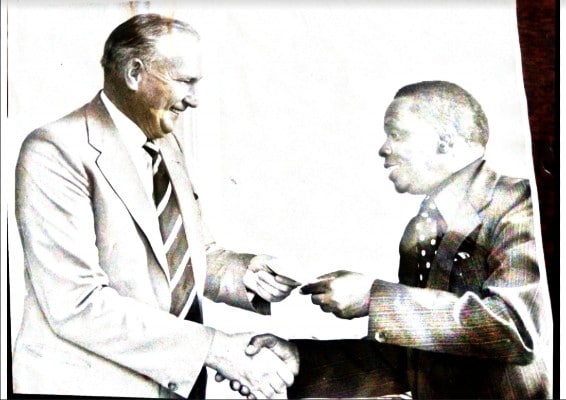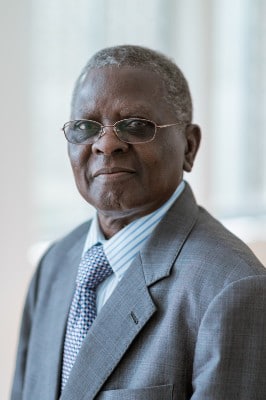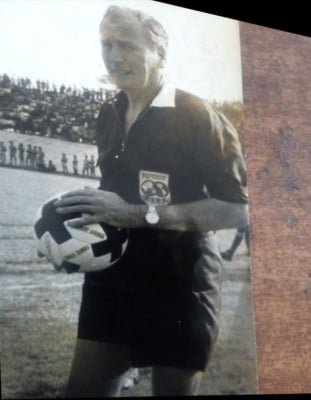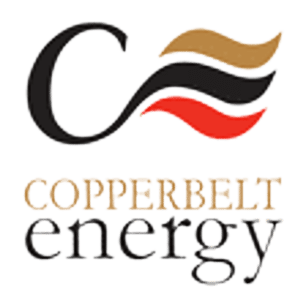Sponsorship and management of Power Dynamos
In earlier decades, at the peak of mining activity in the Copperbelt and before technology started to improve in the new century, it was not uncommon to see a cloud of noxious gases drifting across entire towns. The gases had a chocking effect on the very communities that kept the mines alive with their labour, enterprise and desire to make better lives for all. This cloud took a toll on the community with adverse health effects, mainly respiratory, whose consequences only later showed.
Some say a similar cloud has hung over football in the mining communities since the decline of the once-powerful state-owned entity, Zambia Consolidated Copper Mines, following its privatisation. At varying stages Nkana FC, Mufulira Wanderers, Nchanga Rangers, Konkola Blades, Roan United and others have found themselves wallowing in the depths of despair, in the mediocrity of lower division football. This was something once considered virtually impossible. Only Power Dynamos, of the teams linked to mining activity, has been spared the ignominy of relegation.
The roots of the Club, laid by the initial founder, Meyton Kaira, began through an in-born desire to satisfy an individual’s love for association football. This was realised through a bunch of kids and hopefuls dreaming about a future in the game. Understanding that he had taken the Cub as far as it could go after its early seasons in their rise up the ranks, Kaira was magnanimous in handing over the reigns so that the Club could reach previously unprecedented heights. This would happen under the might of the Copper Power Company (CPC).

Arthur Walter Davies [left]
Davies, though brought up in an era when barriers existed between the different races working in the mines, used football to show that it did not have to be this way. He intermingled with his coaches and players freely. He took a young Lucky Msiska under his wing and treated him like a son. Such was his relationship with him that when the older players, needing to wheedle a little extra cash out of the club, assigned Msiska to take up the matter with Davies.
Later, Davies opened the door for Msiska to spend six months of his football career at Swansea before his move to Belgium materialised. The extent of Davies’ relationship with the players and coaches was such that he even took them into the exclusive CPC Village, a domain of the Company’s top managers, a previously unknown phenomenon in mining circles. Alex Chola, Wisdom Chansa, Clement Banda and Ben Bamfuchile all resided in the plush residential area during their time at Power Dynamos.
When Arthur Davies left the Company and team he loved, he sought to recreate the Power Dynamos model when he joined Mulungushi Investments. Though he had some measure of success, again turning to his trusted protégé, Fred Mwila to implement his vision, it was not possible to reach those Power Dynamos heights. Time and age had also taken their toll on the man who had made a dream come true. Davies later returned to Wales in retirement where he undoubtedly spent time reliving the greater moments of his tenure at Power Dynamos.

Mr. Hanson Sindowe
Sindowe did not carry the weight of the Club alone but was part of the management team, alongside Frederick Bantubonse, Mbita Sikazwe, Ernest Mate and Bill Dow, in place when the success of the 1991 Nelson Mandela Cup, or African Cup Winners Cup, was achieved against Nigeria’s BCC Lions. Worsting its Nigerian opponent over two legs, losing the away leg 3-2 before a thrilling 3-1 win at home, has proved to be Power Dynamos and Zambian club football’s greatest triumph yet as no other Zambian club has been able to match this feat.
The Club captured several league titles in 1994, 1996, 2000 and 2011 during the tenure of this history-setting management team and when Sindowe was Club patron. The era of the most memorable Power Dynamos’ successes to date came via a string of CEC managers who carried their management skills from the boardroom to the football club. They all served diligently and made their indelible mark on the Zambian football landscape; collectively winning six league titles, an African final and becoming runner up in another along the way, and numerous cups.
More recently, though not able to consistently challenge for the title as they once had, the team has stayed up the competition against opponents with much bigger resources at their disposal, and without the regulatory constraints of operating a football entity within a publicly listed company. Leadership support has continued to flow unabated from the sponsor, all the way from the top with the current Chief Executive Officer, Owen Silavwe, Ben Simukoko, Whiteson Chiti who served in the committee much earlier, club secretaries Mando Lwiindi and, later, Justin Kapoma and others too many to mention contributing to the Club’s cause. All have brought their management skills from the Nkana East offices in the service of the club at varying periods.

FIFA Referee
Without the work that took place behind the scenes, Power Dynamos Football Club would not have reached the heights it has done. The commitment of the men and women behind the Club’s success came as a result of tireless dedication to the cause of excellence. Under these men and women, countless employees joined and fell in love with the cause, giving time, sweat and even tears to make the team a household name in Zambian football. Arthur Davies was a perfectionist, determined to take his club to a level where it would dominate Zambian football and that they did by sparing no limit to sign the best players Zambian football had to offer. Peter Kaumba, Alex Chola and Wisdom Chansa rank among the best-ever Zambian players in the game. Even today, decades later, their exploits are spoken about in awe by those that watched them.
Today, the Club is seeking to restore its rightful place at the summit of Zambian football under current chairman Bbenkele Haachitwe and an executive team that understands the proud history and achievements of the Club. The weight of responsibility weighs heavily on their shoulders, but they proudly carry the flag of a team with a fine history and great expectation.
For comments and contributions email [email protected]
By Ponga Liwewe, Times of Zambia, Friday, 4 June 2021

